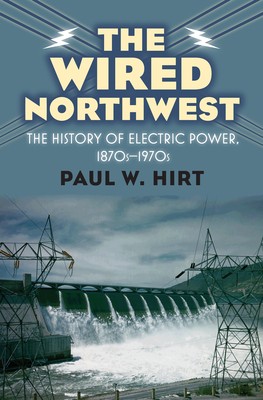
- We will send in 10–14 business days.
- Author: Paul W Hirt
- Publisher: University Press Of Kansas
- ISBN-10: 0700618732
- ISBN-13: 9780700618736
- Format: 16.5 x 24.1 x 3.8 cm, hardcover
- Language: English
- SAVE -10% with code: EXTRA
Reviews
Description
The Pacific Northwest holds an abundance of resources for energy production, from hydroelectric power to coal, nuclear power, wind turbines, and even solar panels. But hydropower is king. Dams on the Columbia, Snake, Fraser, Kootenay, and dozens of other rivers provided the foundation for an expanding, regionally integrated power system in the U.S. Northwest and British Columbia. A broad historical synthesis chronicling the region's first century of electrification, Paul Hirt's new study reveals how the region's citizens struggled to build a power system that was technologically efficient, financially profitable, and socially and environmentally responsible.
Hirt shows that every energy source comes with its share of costs and benefits. Because Northwest energy development meant river development, the electric power industry collided with the salmon fishing industry and the treaty rights of Northwest indigenous peoples from the 1890s to the present. Because U.S. federal agencies like the Army Corps of Engineers and the U.S. Bureau of Reclamation built many of the large dams in the region, a significant portion of the power supply is publicly owned, initiating contentious debates over how that power should best serve the citizens of the region. Hirt dissects these ongoing battles, evaluating the successes and failures of regional efforts to craft an efficient yet socially just power system. Focusing on the dynamics of problem-solving, governance, and the tense relationship between profit-seeking and the public interest, Hirt's narrative takes in a wide range of players-not only on the consumer side, where electricity transformed mills, mines, households, commercial districts, urban transit, factories, and farms, but also power companies operating at the local and regional level, and investment companies that financed and in some cases parasitized the operators. His study also straddles the international border. It is the first book to compare energy development in the U.S. Northwest and British Columbia. Both engaging and balanced in its treatment of all the actors on this expansive stage, The Wired Northwest helps us better understand the challenges of the twenty-first century, as we try to learn from past mistakes and re-design an energy grid for a more sustainable future.EXTRA 10 % discount with code: EXTRA
The promotion ends in 11d.12:09:40
The discount code is valid when purchasing from 10 €. Discounts do not stack.
- Author: Paul W Hirt
- Publisher: University Press Of Kansas
- ISBN-10: 0700618732
- ISBN-13: 9780700618736
- Format: 16.5 x 24.1 x 3.8 cm, hardcover
- Language: English English
The Pacific Northwest holds an abundance of resources for energy production, from hydroelectric power to coal, nuclear power, wind turbines, and even solar panels. But hydropower is king. Dams on the Columbia, Snake, Fraser, Kootenay, and dozens of other rivers provided the foundation for an expanding, regionally integrated power system in the U.S. Northwest and British Columbia. A broad historical synthesis chronicling the region's first century of electrification, Paul Hirt's new study reveals how the region's citizens struggled to build a power system that was technologically efficient, financially profitable, and socially and environmentally responsible.
Hirt shows that every energy source comes with its share of costs and benefits. Because Northwest energy development meant river development, the electric power industry collided with the salmon fishing industry and the treaty rights of Northwest indigenous peoples from the 1890s to the present. Because U.S. federal agencies like the Army Corps of Engineers and the U.S. Bureau of Reclamation built many of the large dams in the region, a significant portion of the power supply is publicly owned, initiating contentious debates over how that power should best serve the citizens of the region. Hirt dissects these ongoing battles, evaluating the successes and failures of regional efforts to craft an efficient yet socially just power system. Focusing on the dynamics of problem-solving, governance, and the tense relationship between profit-seeking and the public interest, Hirt's narrative takes in a wide range of players-not only on the consumer side, where electricity transformed mills, mines, households, commercial districts, urban transit, factories, and farms, but also power companies operating at the local and regional level, and investment companies that financed and in some cases parasitized the operators. His study also straddles the international border. It is the first book to compare energy development in the U.S. Northwest and British Columbia. Both engaging and balanced in its treatment of all the actors on this expansive stage, The Wired Northwest helps us better understand the challenges of the twenty-first century, as we try to learn from past mistakes and re-design an energy grid for a more sustainable future.

Reviews